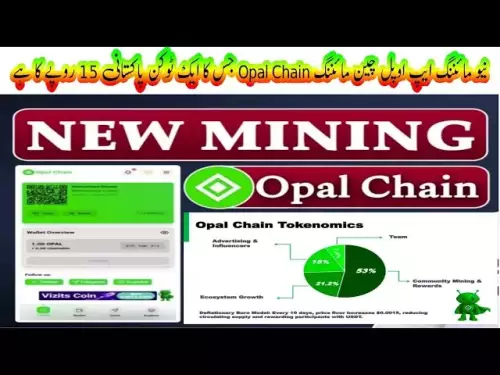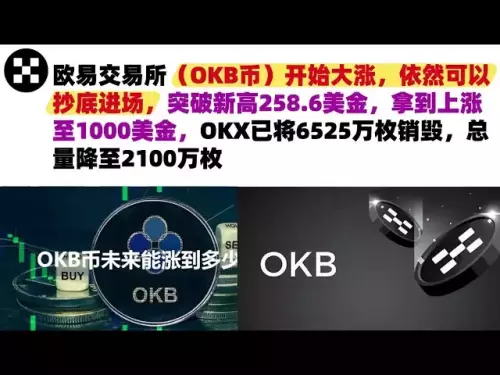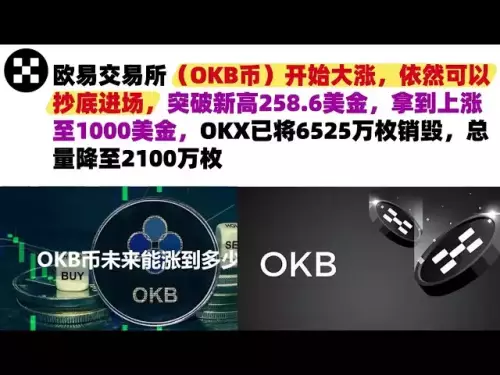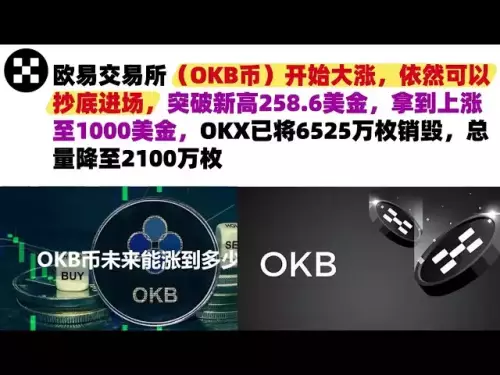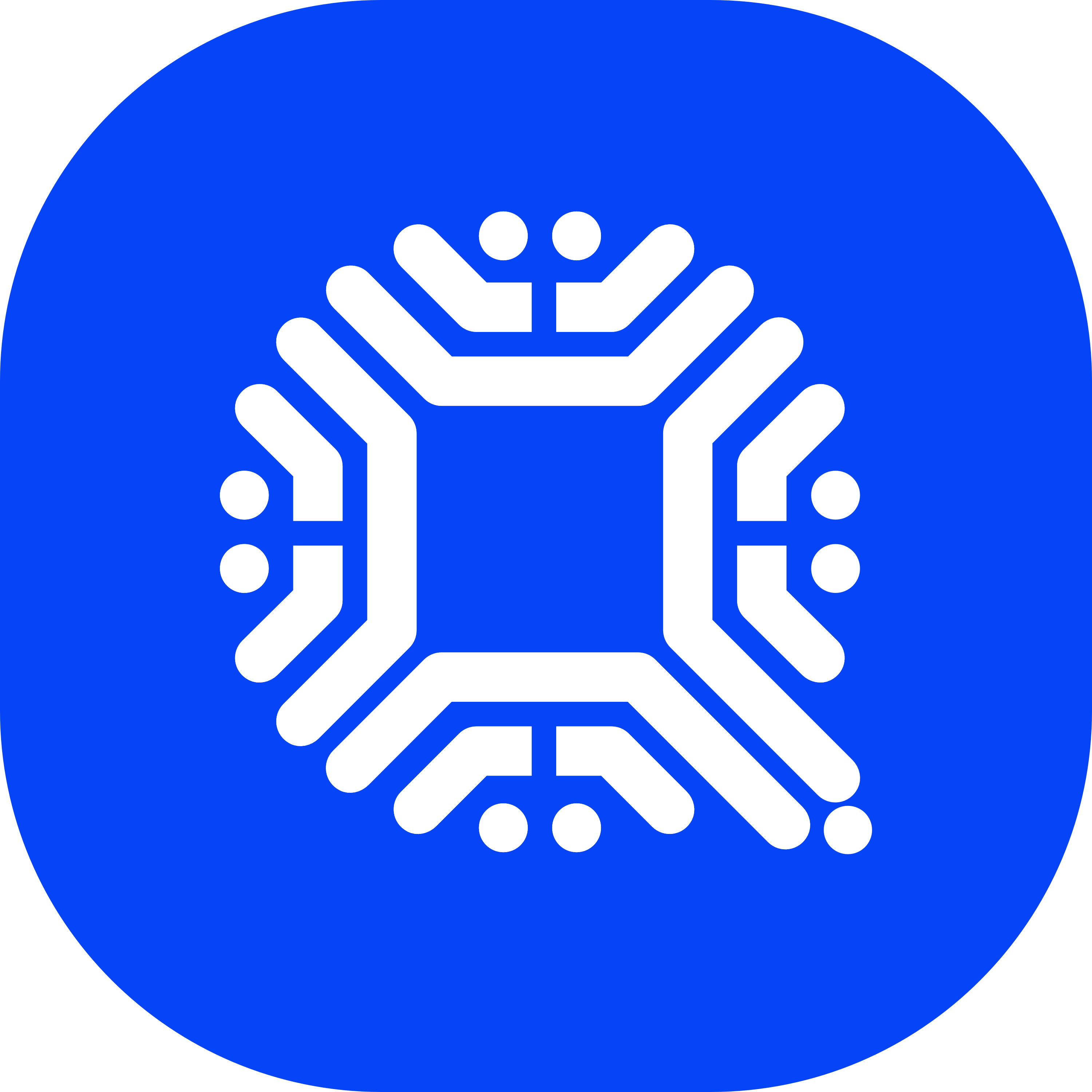-
 Bitcoin
Bitcoin $108900
0.08% -
 Ethereum
Ethereum $4367
0.75% -
 Tether USDt
Tether USDt $0.0000
-0.01% -
 XRP
XRP $2.812
-1.10% -
 BNB
BNB $858.1
-0.05% -
 Solana
Solana $200.8
-1.91% -
 USDC
USDC $0.9998
-0.01% -
 Dogecoin
Dogecoin $0.2157
0.93% -
 TRON
TRON $0.3383
0.68% -
 Cardano
Cardano $0.8217
-0.08% -
 Chainlink
Chainlink $23.38
-0.27% -
 Hyperliquid
Hyperliquid $44.11
-1.65% -
 Ethena USDe
Ethena USDe $1.001
0.01% -
 Sui
Sui $3.304
-0.08% -
 Stellar
Stellar $0.3572
-1.01% -
 Bitcoin Cash
Bitcoin Cash $547.2
1.83% -
 Cronos
Cronos $0.3100
14.84% -
 Avalanche
Avalanche $23.76
0.74% -
 Hedera
Hedera $0.2252
-0.71% -
 UNUS SED LEO
UNUS SED LEO $9.501
0.61% -
 Litecoin
Litecoin $110.4
0.39% -
 Toncoin
Toncoin $3.128
1.60% -
 Shiba Inu
Shiba Inu $0.00001237
2.22% -
 Uniswap
Uniswap $9.691
1.50% -
 Polkadot
Polkadot $3.769
-0.15% -
 Dai
Dai $1.000
0.00% -
 Bitget Token
Bitget Token $4.536
0.17% -
 Aave
Aave $315.3
1.37% -
 Monero
Monero $257.3
-0.70% -
 Ethena
Ethena $0.6553
1.04%
How to lock your assets in Binance staking?
Binance offers flexible staking options like Locked, DeFi, and Liquid Staking with varying APYs, lock-up periods, and asset choices—ideal for tailored crypto investment strategies.
Aug 30, 2025 at 01:37 pm
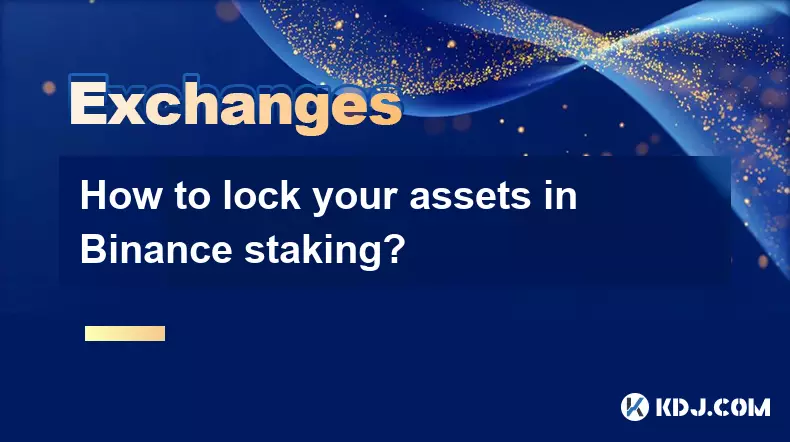
Understanding Binance Staking Options
1. Binance offers multiple staking products including Locked Staking, DeFi Staking, and Liquid Staking. Each product has different lock-up periods and reward structures. Users must select the correct category based on their asset type and risk tolerance.
2. Locked Staking requires users to commit their crypto assets for a fixed duration. During this period, the assets cannot be withdrawn or traded. The available durations typically range from 7 days to 120 days, depending on the asset.
3. Before locking assets, users must ensure their Binance account is verified and has sufficient balance. Some staking options require a minimum investment threshold, which varies per cryptocurrency.
4. Binance supports staking for various tokens such as BNB, ETH, SOL, ADA, and stablecoins like BUSD and USDT. Each token has different Annual Percentage Yield (APY) rates, which are updated regularly based on market demand.
5. Users can access staking through the Binance website or mobile app. The interface displays real-time APY, lock-up duration, and estimated returns, allowing investors to make informed decisions before committing funds.
Steps to Lock Assets in Binance Staking
1. Log in to your Binance account and navigate to the “Earn” section. Select “Staking” from the dropdown menu to view available staking products.
2. Choose “Locked Staking” and browse the list of supported cryptocurrencies. Filter options by duration, APY, or asset type to find the most suitable plan.
3. Click on the desired staking product and enter the amount of cryptocurrency you wish to lock. The system will display the estimated rewards and maturity date based on the selected term.
4. Review the terms, including early redemption penalties and reward distribution schedule. Confirm the transaction using two-factor authentication (2FA) to complete the locking process.
5. Once confirmed, the assets are moved from your spot wallet to the staking portfolio. A confirmation email and in-app notification will be sent to verify the successful lock-in.
Rewards and Redemption Mechanics
1. Staking rewards are calculated daily and distributed after the completion of each cycle. For example, if you choose a 30-day lock-up, rewards are credited at the end of the period.
2. Rewards are paid in the same cryptocurrency that was staked. If you lock 10 BNB, the returns will also be in BNB, not in another token or fiat currency.
3. Early redemption is possible in some cases but often incurs a penalty. This may include forfeiture of accrued rewards or a deduction from the principal amount.
4. Upon maturity, staked assets and rewards are automatically transferred back to your spot wallet. No manual claim action is required unless specified by Binance for certain products.
5. Users should monitor their staking dashboard regularly to track upcoming maturities and reinvestment opportunities.
Security and Risk Considerations
1. Binance employs multi-layered security protocols to protect staked assets, including cold storage, encryption, and regular audits. However, smart contract risks exist in DeFi-related staking options.
2. Market volatility can affect the value of staked assets even if the nominal amount remains unchanged. A high APY does not guarantee profit if the underlying asset price drops significantly.
3. Always use official Binance channels to access staking services and avoid phishing sites that mimic the platform’s interface.
4. Regulatory changes in certain jurisdictions may impact staking availability or tax treatment. Users are responsible for complying with local laws regarding crypto earnings.
5. While Binance does not charge fees for most staking products, third-party protocols integrated into DeFi staking may apply network or service fees.
Frequently Asked Questions
Can I stake using a Binance Savings account?No, Binance Savings operates under flexible or fixed-term earning models separate from staking. Staking requires a dedicated lock-up commitment and is accessed through the “Staking” tab, not “Savings.”
What happens if I lose access to my account during the lock-up period?If you lose access, recovery depends on your account security setup. Ensure your recovery email, phone number, and 2FA backup codes are secure. Binance cannot release staked funds without proper authentication.
Are staking rewards subject to taxes?Yes, in many countries, staking rewards are considered taxable income at the time they are received. Users must report these earnings according to their local tax regulations.
Can I compound my staking rewards automatically?Binance does not offer automatic compounding for most locked staking products. After maturity, users must manually reinvest their principal and rewards into a new staking cycle.
Disclaimer:info@kdj.com
The information provided is not trading advice. kdj.com does not assume any responsibility for any investments made based on the information provided in this article. Cryptocurrencies are highly volatile and it is highly recommended that you invest with caution after thorough research!
If you believe that the content used on this website infringes your copyright, please contact us immediately (info@kdj.com) and we will delete it promptly.
- Elon Musk, Dogecoin, and the Treasury Firm: A New Chapter?
- 2025-08-30 23:05:15
- Dogecoin, Elon Musk, and the Price Slump: What's the Deal?
- 2025-08-31 00:05:13
- Kaspa Smart Contracts: Why the Delay Might Be a Genius Move
- 2025-08-31 00:10:13
- Gateio, BLOCKST, and Blockchain Launches: What's the Buzz?
- 2025-08-31 00:15:12
- Ethereum, Stocks, and NFTs: Navigating the Tipping Point in 2025
- 2025-08-30 22:45:29
- Bitcoin Price Under Pressure: Support Levels and Analyst Forecasts
- 2025-08-30 22:50:12
Related knowledge
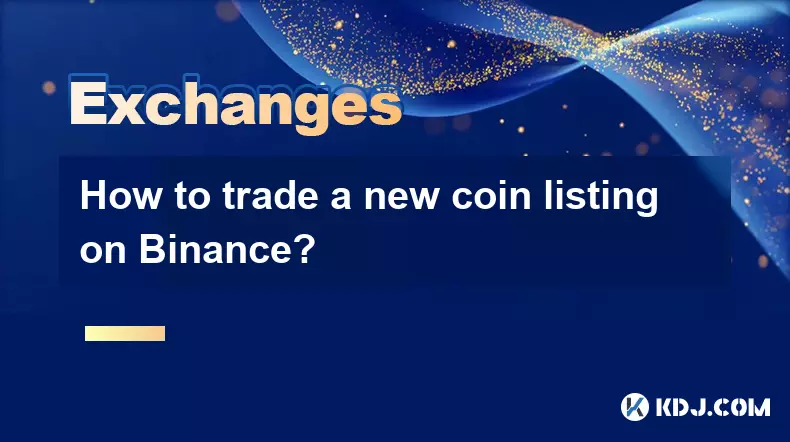
How to trade a new coin listing on Binance?
Aug 29,2025 at 11:14am
Understanding the Pre-Listing Phase1. Research the project thoroughly before any listing announcement. Whitepapers, team backgrounds, and community se...
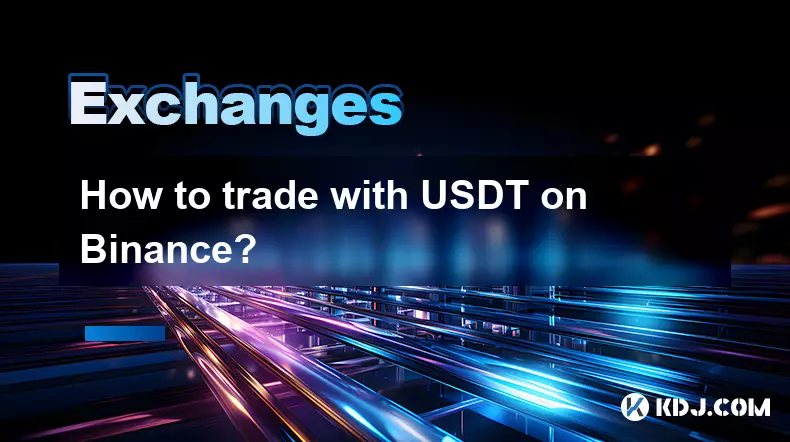
How to trade with USDT on Binance?
Aug 30,2025 at 02:19am
Getting Started with USDT Trading on Binance1. Create and verify your Binance account. Visit the official Binance website and complete the registratio...
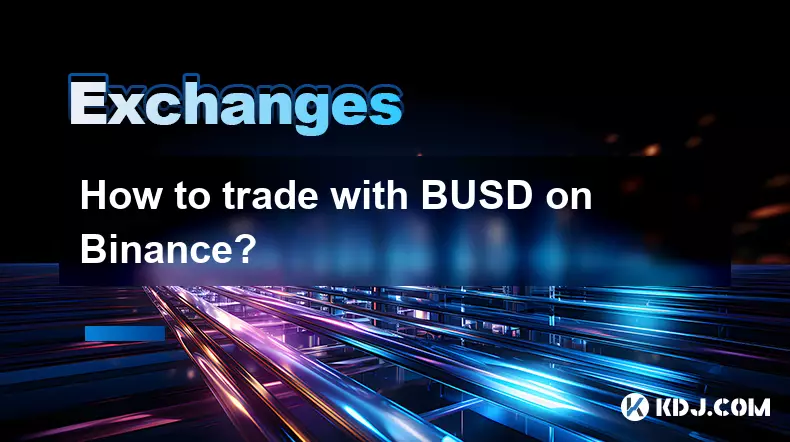
How to trade with BUSD on Binance?
Aug 30,2025 at 07:42am
Understanding BUSD and Its Role in Binance Trading1. BUSD, or Binance USD, is a stablecoin pegged to the value of the U.S. dollar, meaning 1 BUSD is a...

How to lock your assets in Binance staking?
Aug 30,2025 at 01:37pm
Understanding Binance Staking Options1. Binance offers multiple staking products including Locked Staking, DeFi Staking, and Liquid Staking. Each prod...

How to find your referral ID on Binance?
Aug 30,2025 at 12:18am
Understanding the Importance of a Referral ID on Binance1. A referral ID on Binance is a unique identifier assigned to each user who participates in t...
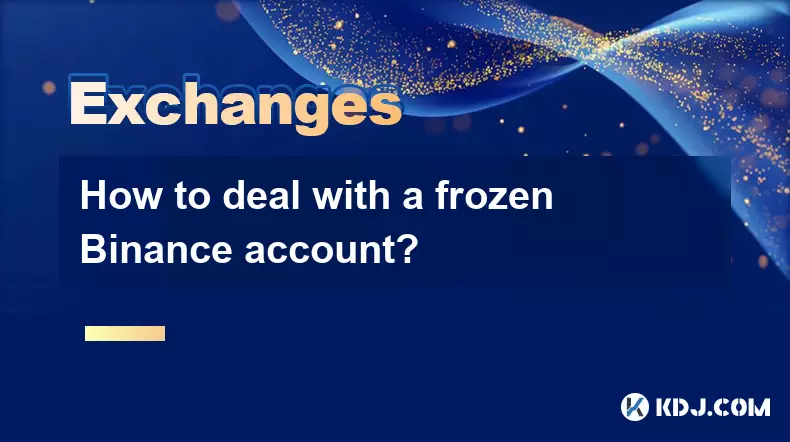
How to deal with a frozen Binance account?
Aug 30,2025 at 05:52am
Understanding the Reasons Behind a Frozen Binance Account1. Accounts on Binance may be frozen due to security concerns, especially after unusual login...

How to trade a new coin listing on Binance?
Aug 29,2025 at 11:14am
Understanding the Pre-Listing Phase1. Research the project thoroughly before any listing announcement. Whitepapers, team backgrounds, and community se...

How to trade with USDT on Binance?
Aug 30,2025 at 02:19am
Getting Started with USDT Trading on Binance1. Create and verify your Binance account. Visit the official Binance website and complete the registratio...

How to trade with BUSD on Binance?
Aug 30,2025 at 07:42am
Understanding BUSD and Its Role in Binance Trading1. BUSD, or Binance USD, is a stablecoin pegged to the value of the U.S. dollar, meaning 1 BUSD is a...

How to lock your assets in Binance staking?
Aug 30,2025 at 01:37pm
Understanding Binance Staking Options1. Binance offers multiple staking products including Locked Staking, DeFi Staking, and Liquid Staking. Each prod...

How to find your referral ID on Binance?
Aug 30,2025 at 12:18am
Understanding the Importance of a Referral ID on Binance1. A referral ID on Binance is a unique identifier assigned to each user who participates in t...

How to deal with a frozen Binance account?
Aug 30,2025 at 05:52am
Understanding the Reasons Behind a Frozen Binance Account1. Accounts on Binance may be frozen due to security concerns, especially after unusual login...
See all articles





















